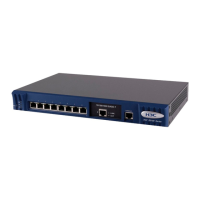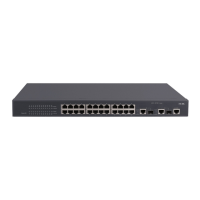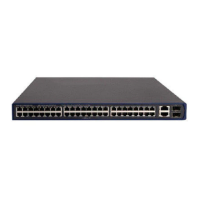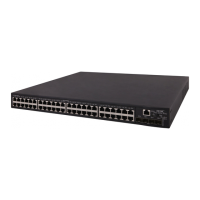1-9
Operation Command Remarks
Configure a description for an
aggregation group
link-aggregation
group
agg-id
description
agg-name
Optional
By default, no description is
configured for an aggregation
group.
If you have saved the current configuration with the save command, after system reboot, the
configuration concerning manual and static aggregation groups and their descriptions still exists, but
that of dynamic aggregation groups and their descriptions gets lost.
Displaying and Maintaining Link Aggregation Configuration
After the above configuration, you can execute the display command in any view to display the running
status after the link aggregation configuration and verify your configuration. Execute the reset
command in user view to clear LACP statistics on ports.
Table 1-5 Display and maintain link aggregation configuration
Operation Command Remarks
Display summary information of all aggregation
groups
display link-aggregation summary
Display detailed information of a specific
aggregation group or all aggregation groups
display link-aggregation verbose
[ agg-id ]
Display link aggregation details of a specified
port or port range
display link-aggregation interface
interface-type interface-number [
to
interface-type interface-number ]
Display local device ID
display lacp system-id
Available in any
view
Clear LACP statistics about a specified port or
port range
reset lacp statistics
[
interface
interface-type interface-number [
to
interface-type interface-number ] ]
Available in
user view
Link Aggregation Configuration Example
Ethernet Port Aggregation Configuration Example
Network requirements
z Switch A connects to Switch B with three ports Ethernet1/0/1 to Ethernet1/0/3. It is required that
incoming/outgoing load between the two switches can be shared among the three ports.
z Adopt three different aggregation modes to implement link aggregation on the three ports between
switch A and B.

